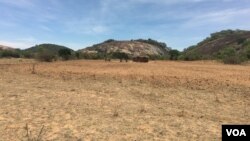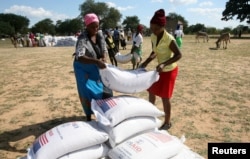The U.N. Food and Agriculture Organization said Friday that more than 40 million people need food assistance across southern Africa before the next harvest next March, with Zimbabwe and Madagascar being some of the worst hit.
Chimimba David Phiri, the head of FAO in southern Africa, told journalists in Harare that of the $35.8 million the U.N. agencies in the region need to fight the effects of El Nino, only $8 million has been secured. The region was hit by El Nino-induced drought — the area's worst in 35 years — but forecasts point to a better season ahead, with possibly better-than-average rainfalls.
In an interview with VOA, Phiri said all countries in southern Africa were affected by El Nino-related drought, but "some hot spots are worse than others. Southern Madagascar is in dire need of immediate support. There, if we do not provide support very quickly and urgently, a famine might develop."
Some assistance
Phiri said other southern African countries were feeling the effects of El Nino less because their governments and organizations like the U.S. Agency for International Development and the European Union had moved in to ease the situation.
El Nino-induced drought has not only left people in southern Africa without food but also has affected some parts of the Horn of Africa, including Ethiopia, which earlier this year asked for international assistance to feed about 10 million of its citizens.
In southern Africa, the other most affected countries are Malawi and Zimbabwe. The latter, once the breadbasket of Africa, has about 5 million people in both urban and rural areas in need of assistance until the harvest that's expected next March.
Zimbabwe in 'crisis'
At one point, President Robert Mugabe's government asked for assistance for more than a quarter of the country's 13 million people. U.N. Resident Coordinator in Zimbabwe Bishow Parajuli called the period between now and the next harvest a "critical" period.
"Therefore, we really need to work hard to meet the critical needs of people during that period," Parajuli said. "Zimbabwe is in the midst of economic crisis and it has a tough situation because of the drought. The people of Zimbabwe need help at this critical juncture."
The U.N. diplomat was referring to such factors as health, water and sanitation services. He said of the more than $350 million being sought for those services, about $200 million had been committed, and he called for more donors.









